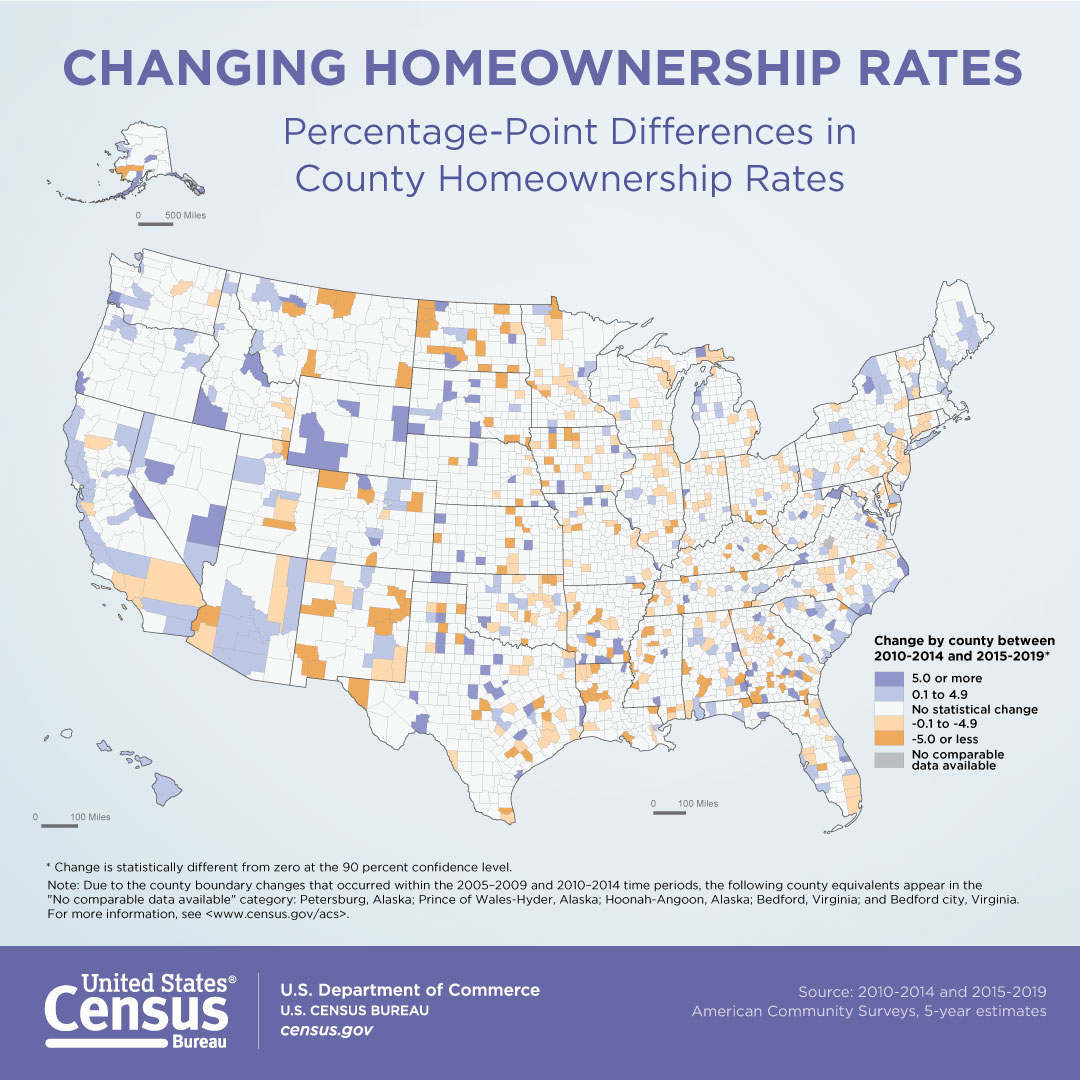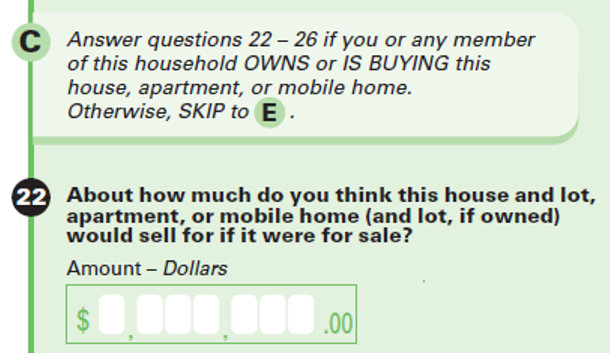Provide Adequate Housing
We ask about the different types of households in a community (single people, couples, families, roommates, etc.) and rates of home rental and ownership to help communities understand whether available housing meets the needs of residents. Data about owners and renters, in combination with housing costs and the combined income of all people in a household, help communities understand whether housing is affordable for residents.
When housing is not sufficient or affordable, statistics about owners, renters, and housing costs help communities:
- Enroll eligible households in programs designed to assist them.
- Qualify for grants from the Community Development Block Grant (CDBG), HOME Investment Partnership Program, Emergency Solutions Grants (ESG), Housing Opportunities for Persons with AIDS (HOPWA), and other programs.
When rental housing is not affordable, the Department of Housing and Urban Developments uses rent data to determine the amount of tenant subsidies in housing assistance programs. The amount of subsidies is based on the rental distribution of housing units (the standard cost of different types of housing in different areas of the country) and Fair Market Rents.
Plan Community Development
Knowing how the balance of rented homes, mortgaged homes, and owned homes changes over time helps communities:
- Understand changes in local housing markets.
- Identify opportunities to improve tax, assistance, and zoning policies.
- Reduce tax revenue losses from vacant or abandoned properties.
- Determine housing assistance funding (Fair Market Rents).
Ensure Equal Opportunity
We ask about the characteristics of people who rent and people who own homes, such as age, sex, race, Hispanic origin, and disability status to help the government and communities enforce laws designed to eliminate discrimination in housing, such as the 1968 Fair Housing Act.
Understand Changing Households
Statistics about whether older residents are staying in homes as they age or moving into rented homes; and whether young people are staying with parents, renting with roommates, or buying homes, help governments and communities distribute funds appropriately between home ownership and rental housing programs and services for residents.
Infographic: Changing Homeownership Rates

[Source: 2010-2014 and 2015-2019 American Community Survey, 5-Year]










